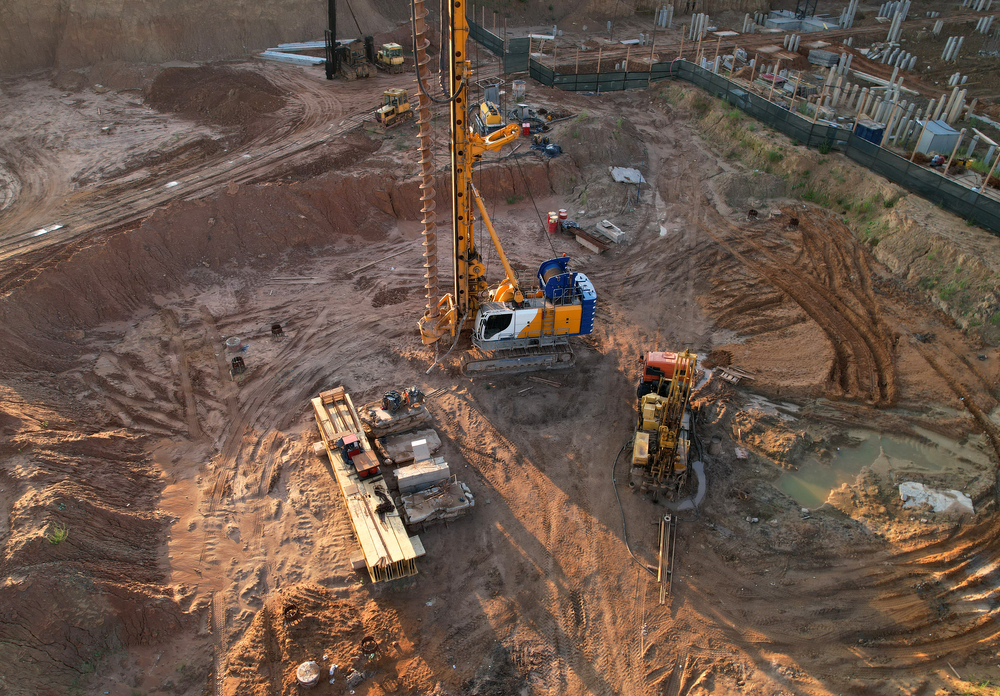The smart Trick of Geotheta That Nobody is Discussing
Table of ContentsGetting The Geotheta To WorkThe Geotheta DiariesSome Of GeothetaWhat Does Geotheta Do?The Only Guide to Geotheta

They perform site investigations, accumulate examples, perform lab examinations, and analyze data to examine the viability of the ground for building jobs - Tailings Engineer. Based upon their searchings for, geotechnical designers give suggestions for foundation style, incline security, preserving structures, and mitigation of geotechnical hazards. They work together with various other experts, such as designers, structural engineers, and building teams, to ensure that geotechnical considerations are incorporated right into the total project layout and execution
By assessing the behavior and properties of dirt and rock, they can identify prospective geotechnical threats such as landslides, dirt negotiation, or incline instability. Their knowledge aids protect against failings or mishaps that could endanger lives and home. Here are some detailed responsibilities and responsibilities of a geotechnical designer: Website Investigation: Geotechnical engineers conduct website investigations to gather data on subsurface problems.
They interpret the data to understand the residential properties and habits of the soil and rock, including their strength, permeability, compaction characteristics, and groundwater problems. Geotechnical Evaluation and Layout: Geotechnical designers assess the information gathered throughout website investigations to assess the security and viability of the website for building jobs. They carry out geotechnical calculations and modeling to assess factors such as bearing ability, settlement, slope stability, side earth stress, and groundwater flow.
Geotheta - The Facts
Foundation Layout: Geotechnical engineers play an important function in developing foundations that can safely support the desired framework. They assess the soil problems and tons requirements to establish the ideal foundation type, such as shallow foundations (e.g., grounds), deep structures (e.g (https://www.openstreetmap.org/user/geotheta)., heaps), or specialized methods like soil renovation. They think about elements such as settlement limitations, bearing capability, and soil-structure communication to establish ideal foundation designs
They examine construction strategies, screen website activities, and carry out field evaluations to confirm that the layout referrals are followed. If unpredicted geotechnical concerns develop, they assess the circumstance and offer recommendations for removal or adjustments to the style. Threat Assessment and Reduction: Geotechnical designers evaluate geotechnical dangers and dangers connected with the job website, such as landslides, liquefaction, or dirt erosion.

Collaboration and Communication: Geotechnical designers function closely with various other professionals involved in a task, such as engineers, structural engineers, and building and construction teams. Efficient interaction and partnership are vital to integrate geotechnical factors to consider into the general project design and building process. Geotechnical engineers give technological proficiency, answer inquiries, and guarantee that geotechnical needs are satisfied.
Fascination About Geotheta
Here are some sorts of geotechnical engineers: Structure Engineer: Foundation engineers concentrate on developing and analyzing foundations for frameworks. They examine the dirt conditions, lots requirements, and website characteristics to establish one of the most appropriate foundation kind and style, such as shallow foundations, deep structures, or specialized methods like heap structures.
They assess the aspects affecting incline security, such as dirt properties, groundwater conditions, and incline geometry, and develop approaches to stop slope failings and reduce dangers. Earthquake Engineer: Quake engineers focus on analyzing and creating structures to endure seismic forces. They examine the seismic danger of a site, assess dirt liquefaction potential, and create seismic design criteria to ensure the safety and security and strength of frameworks during quakes.
They carry out area testing, gather samples, and evaluate the collected information to define the soil residential properties, geologic developments, and groundwater problems at a website. Geotechnical Instrumentation Engineer: Geotechnical instrumentation designers concentrate on surveillance and determining the behavior of soil, rock, and frameworks. They set up and preserve instrumentation systems that monitor factors such as dirt negotiation, groundwater degrees, slope motions, and structural variations to assess efficiency and offer early cautions of potential concerns.
Geotheta Fundamentals Explained
They perform tests such as triaxial examinations, debt consolidation examinations, direct shear examinations, and leaks in the structure tests to gather data for geotechnical evaluation and style. Geosynthetics Designer: Geosynthetics engineers specialize in the style and application of geosynthetic materials, such as geotextiles, geogrids, and geomembranes. They use these materials to boost soil security, enhance slopes, provide drain options, and control disintegration.
They tend to be investigative individuals, which means they're intellectual, introspective, and curious. They are curious, methodical, sensible, logical, and rational. Some of them are also social, indicating they're kind, charitable, participating, person, caring, helpful, understanding, sensible, and friendly - Consulting Engineer.
In the workplace atmosphere, geotechnical engineers utilize specialized software application devices to do computations, create layouts, and assess information. They prepare records, testimonial job specifications, connect with clients and staff member, and coordinate job activities. The office setup supplies a helpful atmosphere for research, analysis, and collaboration with various other experts entailed in the task.
Getting The Geotheta To Work
They frequently check out project sites to carry out site investigations, evaluate geotechnical problems, and collect data for evaluation. These check outs entail traveling to different areas, in some cases in remote or difficult terrains. Geotechnical designers may do dirt sampling, conduct tests, and screen building tasks to ensure that the geotechnical elements of the job are being implemented correctly.
Geotechnical designers likewise work in specialized geotechnical research laboratories. Geotechnical laboratory designers function thoroughly in these atmospheres, handling screening equipment, running instruments, and recording data.